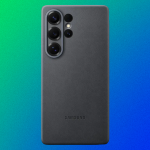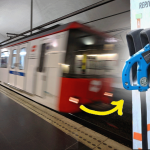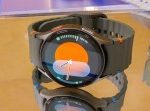
The Xbox Series X, previously known with its official codename of Project Scarlett, was first briefly teased at E3 2019 by Microsoft. At that time, the company promised the next-generation Xbox would be roughly four times as powerful as the Xbox One X console; they also confirmed HDMI 2.1 support (enabling up to 8K resolution at 60 frames per second and up to 120 frames per second at 4K resolution), variable refresh rate (VRR) support, hardware ray tracing support, GDDR6 RAM, and custom made NVMe SSD for storage (potentially used as a sort of virtual RAM).
The console’s name and design were revealed at The Game Awards 2019, alongside the planned Holiday 2020 release window. The full technical information that we’ve compiled below was shared between late February and early March 2020, though.
Xbox Series X Release date
Official – Microsoft has confirmed that the console will be available in stores starting Holiday 2020.
Wccftech’s guess – Mid-to-late November, possibly just ahead of Thanksgiving, is a solid guess based on historical data of Microsoft console launches.
Xbox Series X Pricing
Official – Microsoft’s head of gaming Phil Spencer clearly said the plan is to avoid repeating the same situation of the Xbox One, which costed more than the PlayStation 4 at launch while also being less powerful.
Rumor – Analysts expect the console’s price point to be around $450-499, similar to that of the Xbox One X.
Hardware specifications
| Xbox Series X Specs | |
| CPU (Zen 2) | 8 Cores @ 3.8GHz (3.6GHz with Simultaneous Multithreading) |
| GPU (custom RDNA 2) | 12.147 TFLOPs, 52 Compute Units @ 1.825 GHz with hardware raytracing support |
| System Memory/Interface | 16GB GDDR6/320-bit bus |
| Memory Bandwidth | 10GB at 560 GB/s, 6GB at 336 GB/s |
| Internal Storage | Custom NVMe SSD (1 TB) |
| I/O Throughput | 2.4 GB/s (Raw), 4.5 GB/s (Compressed with BCPack) |
| Expandable Storage | 1 TB Expansion Card (proprietary, developed with Seagate) |
| External Storage | USB 3.2 HDD Support (for XB1 games) |
| Optical Drive | 4K UHD Blu-ray Drive (up to 100 GB disc) |
| Audio | Custom hardware audio block based on Project Acoustics. Spatial audio supported through Dolby Atmos, DTS:X and Windows Sonic. |
The Xbox Series X will use the so-called Xbox Velocity Architecture, which is comprised of four components: the dedicated hardware decompression block, the custom NVMe SSD, Sampler Feedback Streaming, and the brand new DirectStorage API. Its goal will be to ‘radically improve asset streaming’ and ‘effectively multiply available system memory’, which is going to be important since the jump in available RAM is the smallest in the entire spec sheet.
The Xbox Series X hardware is also fully DirectX 12 Ultimate compliant. Its raytracing support is based on the latest version of Microsoft’s DXR API, as you would expect; then there’s the already mentioned Sampler Feedback Streaming, Variable Rate Shading (VRS) support to save performance where the shading rate can be reduced in a game’s scene, and lastly Mesh Shading, which promises to allow game developers to dramatically improve the number of objects that can be displayed in a scene.
Lastly, the DirectML API promises to leverage ‘unprecedented hardware performance in a console’, delivering 24+ TFLOPs of 16-bit float performance and 97+ TOPs of 4-bit integer performance. Machine learning techniques could be used to improve visual quality, make non-player characters (NPCs) smarter, or vastly enhance the realism of animations.
Design
Microsoft completely revolutionized the form factor that we’re used to seeing for consoles with the Xbox Series X, going with a square footprint (15.1 cm x 15.1 cm x 30.1 cm) this time around. The console looks like a small PC tower, which turned out to be necessary given its airflow and acoustics requirements. The components draw 315 watts of power internally, thus generating a fair amount of heat.
The engineers landed on this design after opting for a split motherboard solution, with two boards mounted on the opposite sides of the aluminum chassis. The Southbridge board houses the I/O functions, while the other board features the console’s processor, RAM and power regulators.
The large holes on the top of the Xbox Series X are designed to expel a lot of hot air, with Microsoft boasting 70% more airflow compared to the Xbox One. The Xbox Series X should be relatively quiet, too, thanks to 64 sensors on the SoC that feed the system’s fan algorithm in real time with the latest temperature readings.
Accessories
The new wireless controller won’t be too much different from that of the Xbox One, with the upside of cross-compatibility between Xbox One/Xbox Series X consoles and controllers.
However, Microsoft revealed that the Xbox Series X controller will have a brand new D-pad design whose goal is to boost performance and accessibility across the board. There’s a dedicated Share button now, while the gamepad’s actual feeling has been improved thanks to tactile dot patterns (bumpers, triggers, grips) and a matte finish (D-pad, bumpers and triggers).
Connectivity with other devices such as PC, Android and iOS should be simpler, too, thanks to the implementation of Bluetooth Low Energy and a USB-C port.
Perhaps the biggest improvement is expected in terms of latency, thanks to the Dynamic Latency Input system. The Xbox Series X controller will send information to the console more frequently, resulting in lower input lag for a better synchronized on-screen action.
Software
Official – Microsoft’s industry-leading backward compatibility is back and better than ever with the Xbox Series X. You’ll be able to play, barring very few exceptions, essentially four generations of Xbox games from your library. The new console will run old games at higher resolution and better visual fidelity, steadier frame rates and faster load times. But that’s not all, because the team has added a new bonus for all the owners of High Dynamic Range (HDR) displays. Thanks to an AI-based reconstruction technique, Standard Dynamic Range (SDR) games will be automatically converted to HDR on the Xbox Series X, with no impact on the system resources and no work required on behalf of the individual game developers.
Microsoft announced that Quick Resume functionality has been improved for the Xbox Series X so that players may seamlessly switch between various games at once, resuming almost instantly from where they had left off.
Rumor – Not much is known about the User Interface (UI), but according to Microsoft insider Tom Warren, it shouldn’t change much from the one currently in use on Xbox One.
Games
Just like with the PlayStation 5, the Xbox Series X doesn’t have a lot of confirmed games yet. So far, the only first-party game to be console exclusive for the Xbox Series X is Ninja Theory’s Senua’s Saga: Hellbade II. The Lord of the Rings: Gollum is presently the only third party game confirmed to be coming exclusively on the next-gen consoles, Xbox Series X and PlayStation 5.
Then there is Halo Infinite, of course, which should launch alongside the console if everything goes according to plans, though 343’s new Halo title is also going to be available on Xbox One (and PC).
Gears 5 will be enhanced for Xbox Series X as already detailed by The Coalition. We expect other first-party (and quite a few third-party, too) games to get the same ‘upgrade’ treatment, though it could happen some time after the Xbox Series X has launched. Additionally, most if not all triple-A games released in the Fall season will surely support the new console, starting with Ubisoft’s Gods & Monsters, Rainbow Six: Quarantine, Watch Dogs: Legion. Outriders from Square Enix and People Can Fly is also launching as a cross-generation title.
The post Xbox Series X – Every News, Rumor, Leak on Microsoft’s Next-Gen Console by Alessio Palumbo appeared first on Wccftech.
Powered by WPeMatico










